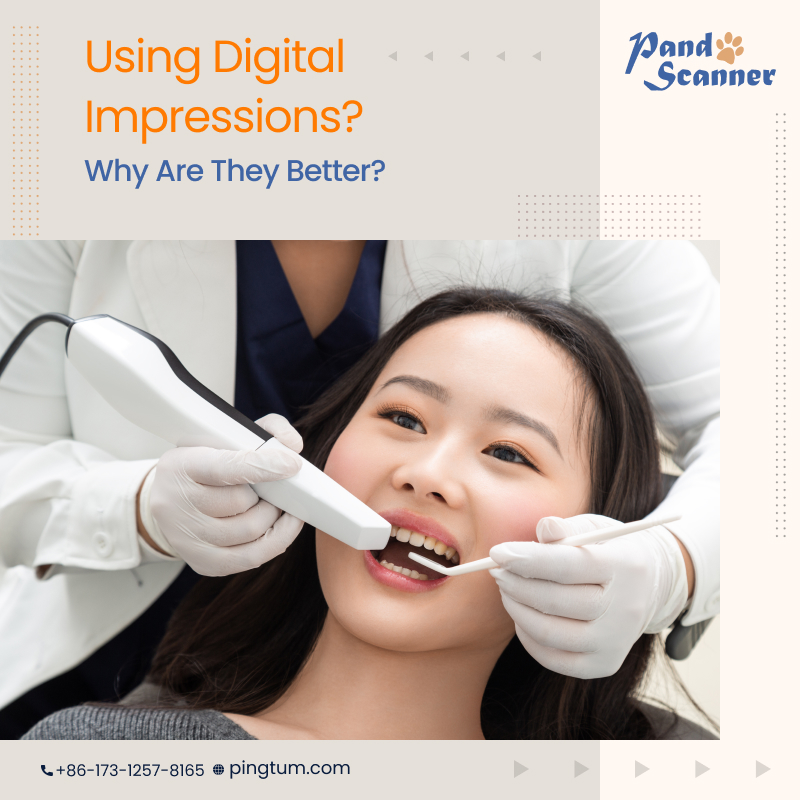Are you suffering from dental issues such as misaligned teeth, missing teeth, etc? If not addressed in time, these issues can lead to problems of bite misalignment, pain in the jaw, inability to smile, reduced social interactions, and a dent in confidence, among others. In such cases, the dentist is most likely to recommend the use of the crown, denture, bridge, or other restorations. However, the most important thing with such recommendations is that any such restoration should fit well inside the mouth. If not, the patient can suffer from jaw pain, bite issues, or premature failure of such a restoration. This is where impressions come into play as important elements to ensure the restorations fit properly.
Traditionally, manual impressions are taken by dentists using resins or alginates, which need to be held by patients in their mouths to get the right impressions. This often turned out to be uncomfortable and distressing for the patients and lead to issues of gagging or swallowing. However, many dentists have upgraded their diagnostic systems to digital impression systems. This begets the question of whether the type of system used by the dentist to take impressions matters? Read the below segment to know the difference.

Which are better – traditional or digital impressions?
Manual dental impressions have been there for a long time, and notwithstanding a few changes over the years, the basic concept remained the same. In this type of impression, patients need to bit into a putty-like material for around 2 – 5 minutes while keeping still. This procedure is simply uncomfortable as the patient needs to sit still for some time lest the impression moves and the outcome turns out to be flawed. In fact, even with multiple retakes, such impressions may contain inaccuracies. On the other hand, digital impressions obtained by a China intraoral scanner are based on advanced imaging software, which in all likelihood are going to be accurate.
Although there are several digital impression systems available in the market, their underlying principle remains the same. The dentist inserts the probe inside the patient’s mouth to capture several images, which are then assembled into a 3D model to represent the oral cavity. This smart technology is more precise and convenient than obtaining traditional manual impressions, and leads to high-quality restorations.
Other benefits of using digital impressions
The facts mentioned above do not mean that manual impressions cannot obtain well-fit and high-quality restorations of the teeth. In fact, countless dentists have been using such impressions for many years to provide high-quality restorations for patients. However, the likelihood of digital impressions getting accurate restorations the first time is more. A digital impression system offers other benefits as well as mentioned below:
- Digital impressions are more convenient to obtain and do not irritate patients, especially those with a strong gag reflex.
- They can be obtained quickly with patients spending less time at the clinic.
- Once the images are obtained, they can be emailed directly to the laboratory quickly, unlike the manual system where the impressions are stored and then physically mailed to the laboratories, which is a time taking process.
- Digital impressions can be stored for an indefinite period for future reference.
- They eliminate the use of disposal trays, impressions, and packing materials that are required to be sent to the laboratory for preparing restorations.
Conclusion
Digital impressions taken by a China intraoral scanner are definitely of high-quality and offer many benefits to both dentists and patients. The fact that precise digital impressions can be obtained the first time makes them the preferred choice of dentists.






